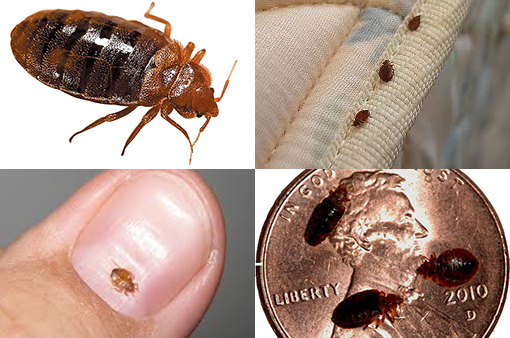Trustworthy A1 Bed Bug Treatment Houston - Proven Methods
Trustworthy A1 Bed Bug Treatment Houston - Proven Methods
Blog Article
Understanding the Lifecycle of Pests for Targeted Control Techniques
Understanding the lifecycle of insects is an essential element of effective bug monitoring methods. With a deeper understanding of how bugs prosper and advance, customized control techniques can be created to deal with specific points in their lifecycle, eventually leading to even more effective pest administration outcomes.
Significance of Recognizing Parasite Lifecycle
Comprehending the lifecycle of parasites is crucial for establishing effective and targeted control approaches in pest management. By understanding the different stages a pest goes via from egg to grownup, parasite control experts can determine prone factors in the lifecycle where intervention can be most successful.
In addition, recognizing the particular ecological problems essential for every phase of the parasite's lifecycle can direct decisions on habitat adjustment or exemption approaches to disrupt the lifecycle and decrease bug populaces. This expertise makes it possible for pest monitoring professionals to implement positive measures as opposed to counting only on reactive treatments, causing even more lasting and long-term bug control options. Eventually, a thorough understanding of parasite lifecycles empowers parasite control professionals to customize their approaches properly, lessening ecological influences and maximizing control end results.
Secret Phases in Bug Advancement
To successfully carry out targeted control methods in parasite management, a critical element lies in adequately recognizing and understanding the key phases in bug advancement. Pest development typically contains a number of essential phases that are critical for their lifecycle and monitoring. The initial stage is the egg stage, where insects lay eggs that later hatch right into larvae. Larvae after that progress into pupae, a stage where they go through metamorphosis before arising as grown-up pests. Comprehending these phases is important as it assists in pinpointing prone factors in the lifecycle where control steps can be most reliable.

Vulnerabilities in Bug Lifecycle
Throughout the numerous phases of an insect's lifecycle, distinct vulnerabilities arise that can be purposefully targeted for effective control measures (A1 bed bug extermination houston). One vital vulnerability lies in the egg phase, where parasites are typically a lot more prone to specific pesticides or biological control representatives due to their soft external covering, making them less complicated targets for intervention. Understanding these vulnerabilities in the insect lifecycle is vital for developing exact and efficient control methods that successfully handle pest populaces while lessening ecological influence.
Implementing Targeted Control Procedures

Carrying out targeted control procedures commonly includes a multi-faceted method. This may include environment adjustment to make the setting much less welcoming to parasites, such as getting rid of standing water for insect control or sealing access points for rodents. Furthermore, biological control techniques can be used, where natural predators or virus are presented to keep bug populations in check.
Integrated Pest Management (IPM) techniques that integrate various control measures in a collaborated and sustainable fashion are often the most reliable in attaining lasting parasite management objectives. By carrying out targeted control actions based on a comprehensive understanding of pest lifecycles, pest populaces can be successfully managed while minimizing look here dangers to human health and wellness and the atmosphere.
Boosted Parasite Monitoring Practices

Moreover, the unification of biological control representatives, such as natural predators or virus of pests, can assist decrease reliance on chemical pesticides and advertise a much more well balanced ecosystem. Implementing physical obstacles and catches can also be part of enhanced insect administration methods, using non-toxic and targeted solutions for insect control. Additionally, the use of pheromones and other semiochemicals can interfere with pest breeding patterns and communication, causing reduced parasite populations with time.
Verdict
By recognizing essential phases in bug development and vulnerabilities in their lifecycle, targeted control procedures can be executed to lessen bug populations. Improved pest monitoring methods can aid lower the reliance on broad-spectrum chemicals and promote more eco pleasant and sustainable parasite control methods.
Recognizing the lifecycle of pests is necessary for establishing efficient and targeted control techniques in insect management. By understanding the numerous stages a pest goes with from egg to adult, pest control professionals can identify at risk points in the lifecycle where intervention can be most effective. Eventually, a comprehensive understanding of bug lifecycles equips parasite control practitioners to customize their methods successfully, making best use of and reducing ecological influences control results.
By carrying out targeted control procedures based on address a complete understanding of insect lifecycles, bug populations can be effectively controlled while minimizing risks to human health and the atmosphere.
By identifying crucial stages in bug growth and susceptabilities in their lifecycle, targeted control steps can be implemented to lessen bug populations.
Report this page